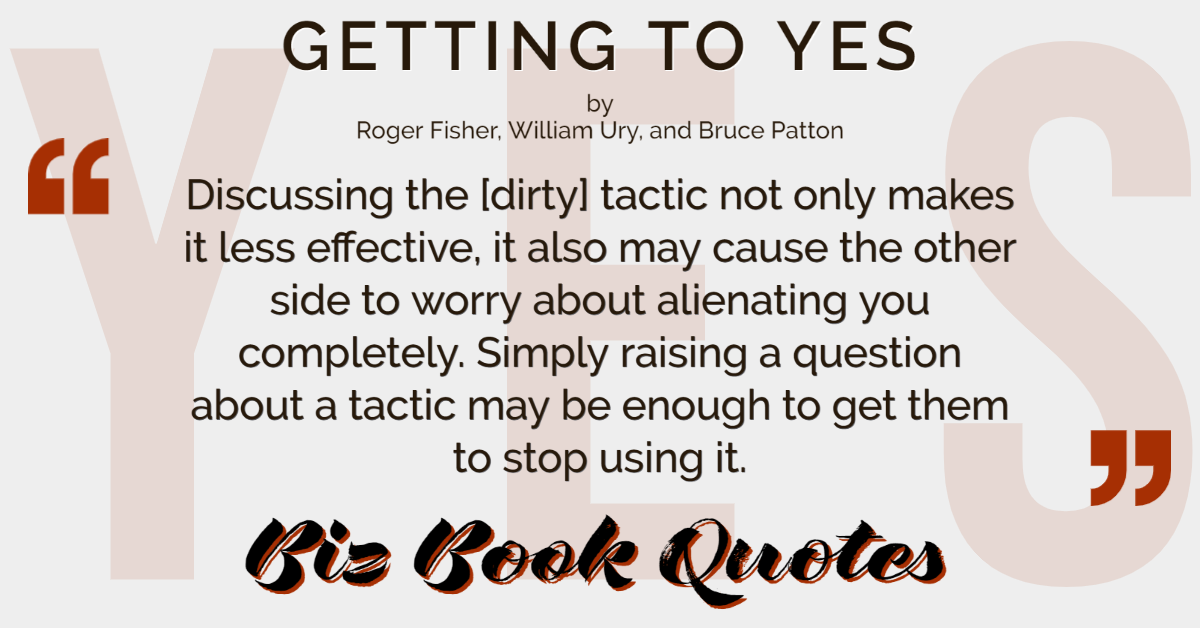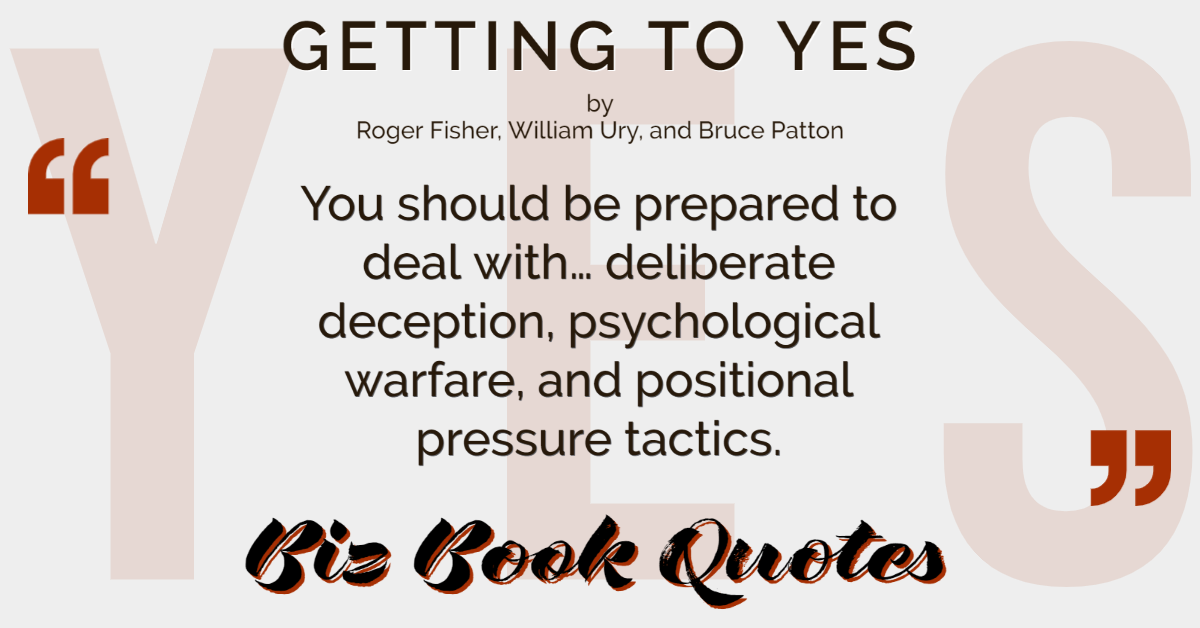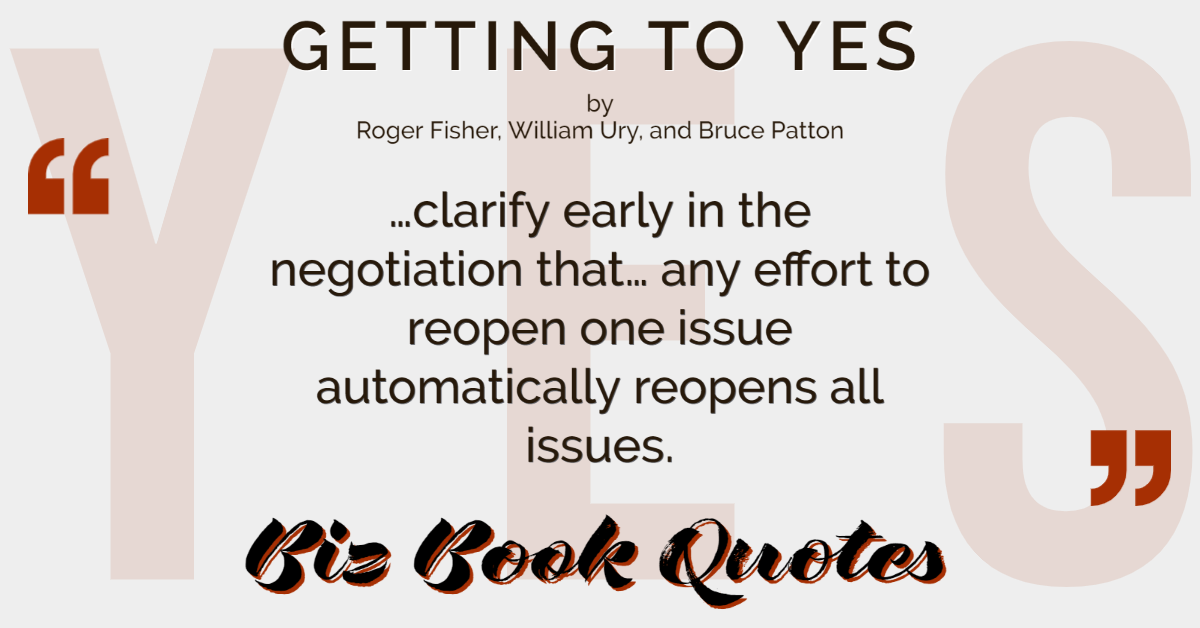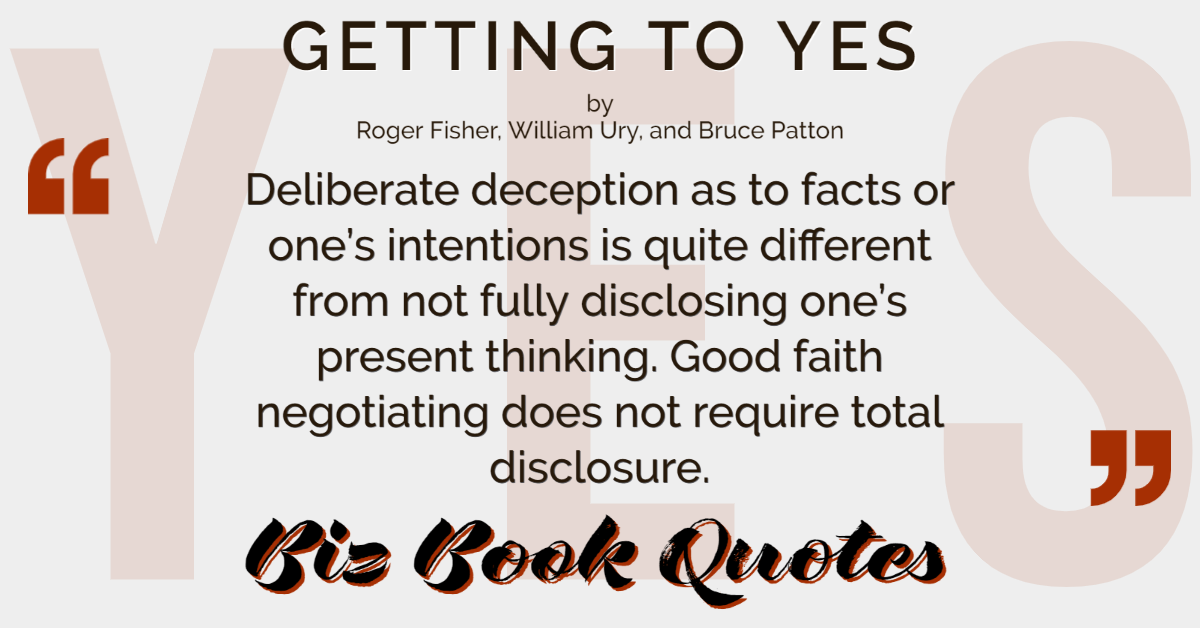|

|
Getting to Yes:
People tend to feel uncomfortable with silence, particularly if they have doubts about the merits of something they have said.
|
114 |
|

|
Getting to Yes:
The one-text procedure not only shifts the game away from positional bargaining, it greatly simplifies the process both of inventing options and of deciding jointly on one.
|
117 |
|

|
Getting to Yes:
After recognizing [a dirty] tactic, consider bringing it up with the other side.
|
132 |
|

|
Getting to Yes:
Discussing the [dirty] tactic not only makes it less effective, it also may cause the other side to worry about alienating you completely. Simply raising a question about a tactic may be enough to get them to stop using it.
|
133 |
|

|
Getting to Yes:
You should be prepared to deal with… deliberate deception, psychological warfare, and positional pressure tactics.
|
134 |
|

|
Getting to Yes:
Disentangle people from the problem. Unless you have good reason to trust somebody, don’t.
|
134 |
|

|
Getting to Yes:
A practice of verifying factual assertions reduces the incentive for deception, and your risk of being cheated.
|
134 |
|

|
Getting to Yes:
Before starting on any give-and-take, find out about the authority on the other side.
|
135 |
|

|
Getting to Yes:
…clarify early in the negotiation that… any effort to reopen one issue automatically reopens all issues.
|
135 |
|

|
Getting to Yes:
Deliberate deception as to facts or one’s intentions is quite different from not fully disclosing one’s present thinking. Good faith negotiating does not require total disclosure.
|
136 |











